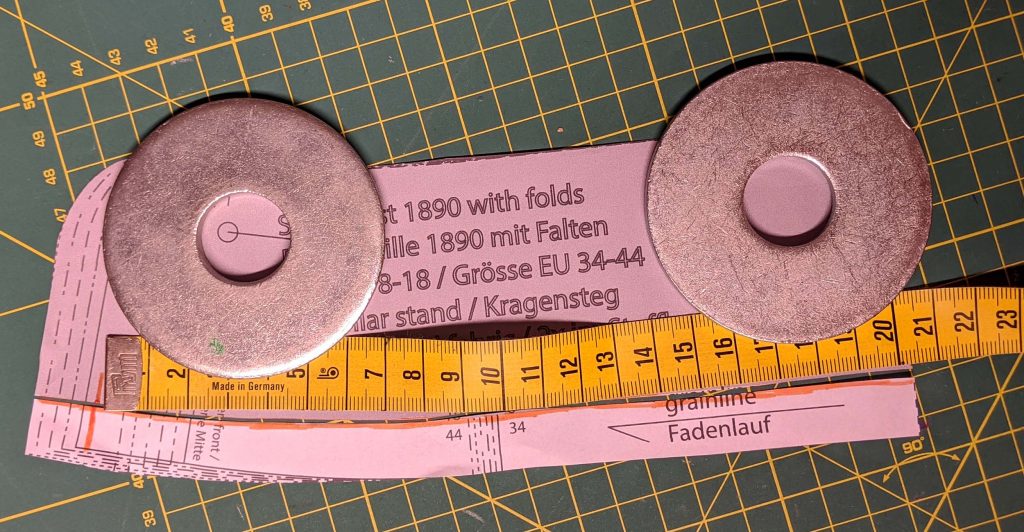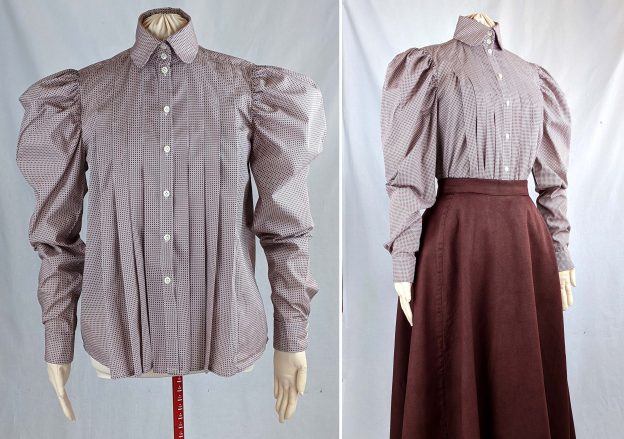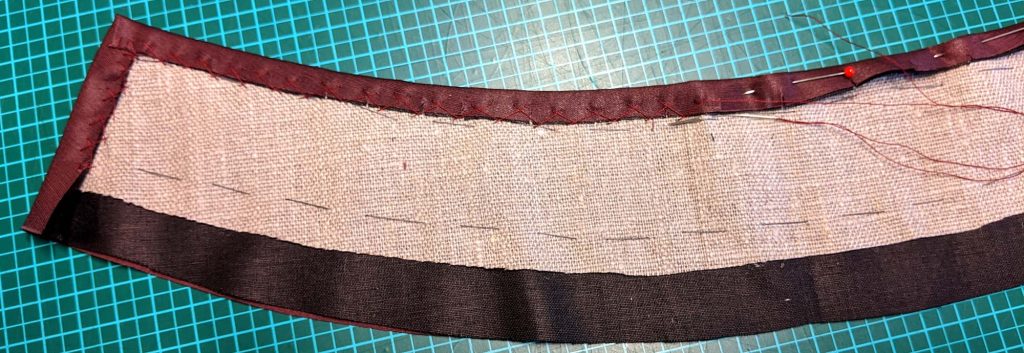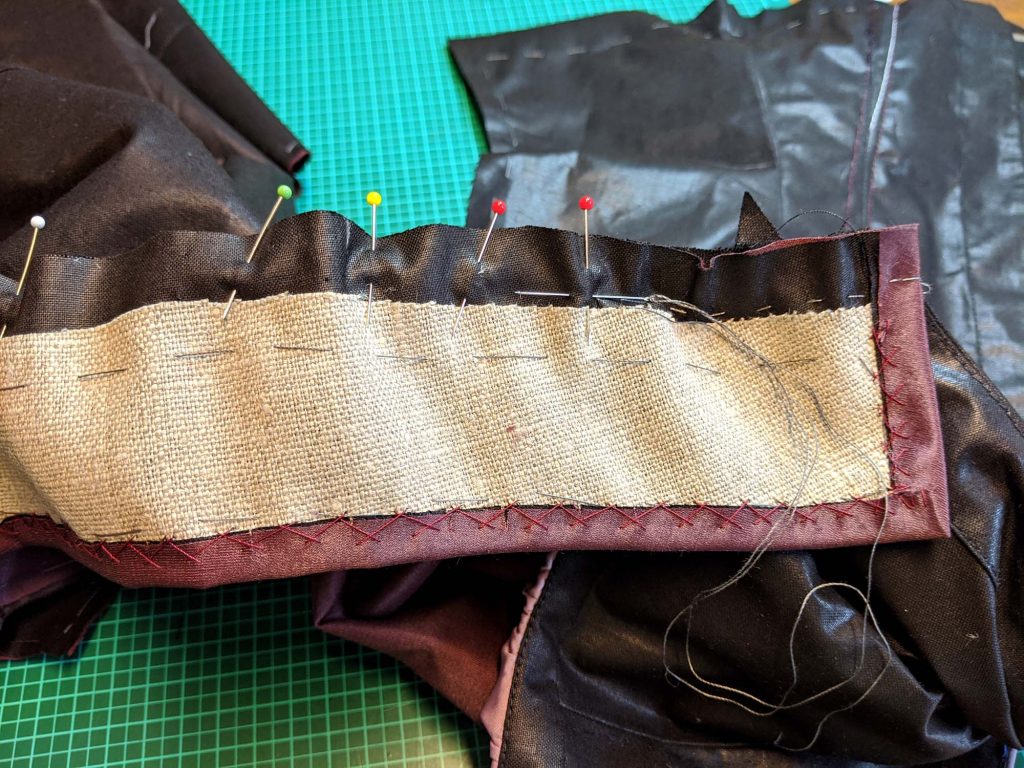Many of you asked about the black blouse with the large puff sleeves that I showed underneath the 1890´s vests. I made this blouse from a black cotton fabric years ago and have worn it a lot at customizing events in recent years. After many washes, it looks like an extant piece from the 1890´s with many sings of wear. Time for a new one, and of course a sewing pattern!
This time I chose a mid to heave weight silk/cotton blend with some drape, a contrasting plastron from a soft satin, all mounted on a base of black polished cotton. With this stiffer fabric it turned out more a day bodice than a blouse. The first, made of light to medium-weight cotton, appears more like a blouse than a day bodice. So, depending on the chosen fabric the finished garment will turn out in different ways.
Both are mounted on a firm and tight fitting lining with boned seams as usual at that time. The lining base closes at the center front, edge to edge with hooks and eyes, covered by the plastron. The plastron is sewn on at the right side, with the edge covered by the fashion fabric of the front. The other side is closes layered underneath the fashion fabric with hooks and eyes.
If you´re interested in sewing the bodice together with me, you can buy my pattern here: Sewing pattern #0420
Let´s start! First thing to do is cutting out all the pattern pieces from fashion fabric and lining. I was asked about the fabric in the picture, it´s the polished cotton!
Sew all back pieces from the lining, right sides together and press the seam allowances towards the sides. Trim back if wanted and clip at the waistline before understitching the seam allowances to lay flat.
Place the back from the fashion fabric on top, with wrong sides together. Make a box pleat at the center back and baste the layers together.
To match the peplum at the back, open the box pleat slightly at the bottom edge and slash the fashion fabric, ending about 5/8” (1,5cm) from the waistline. Turn in a narrow seam allowance along the slits and prick stitch to the lining layer.
Continue reading →






















